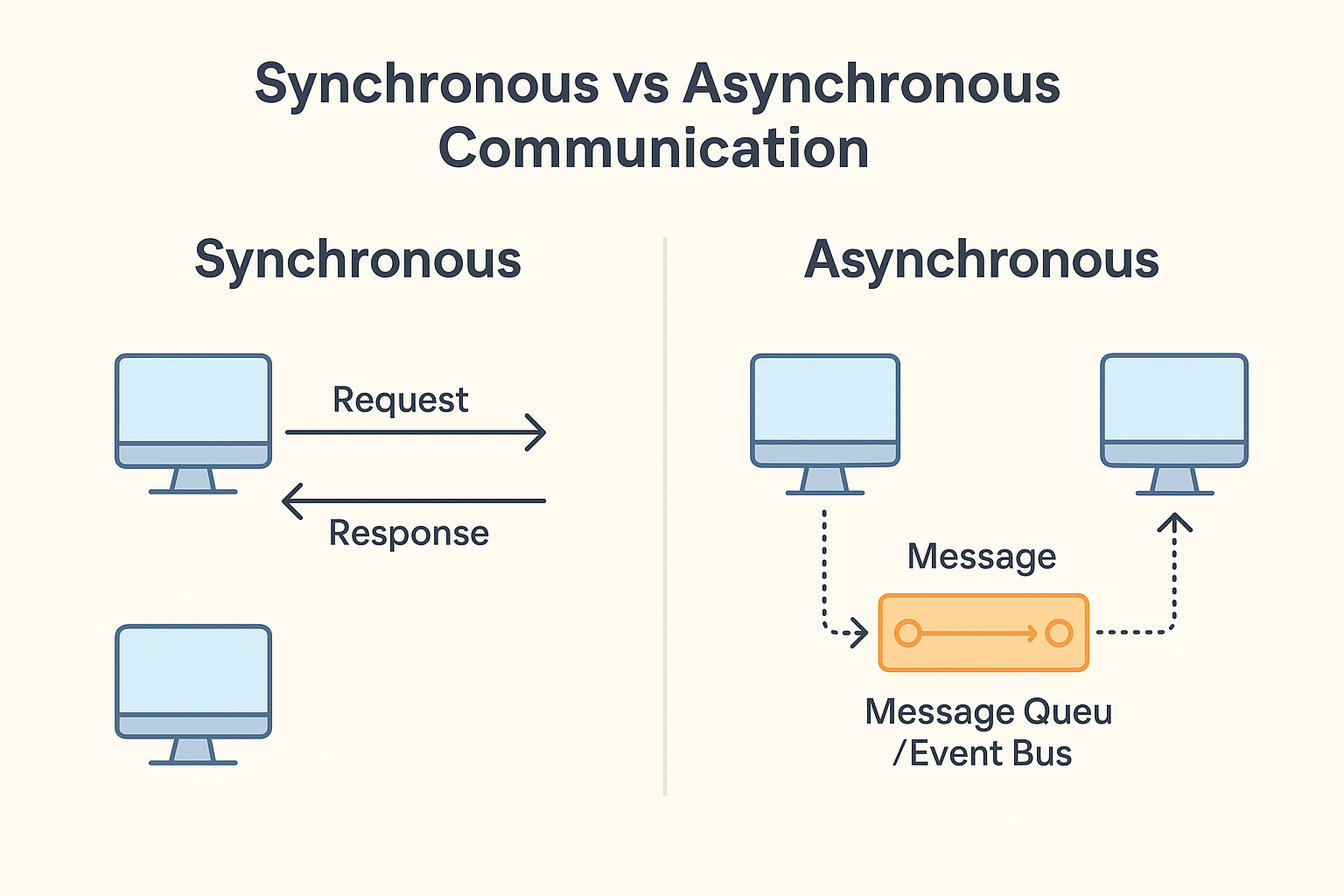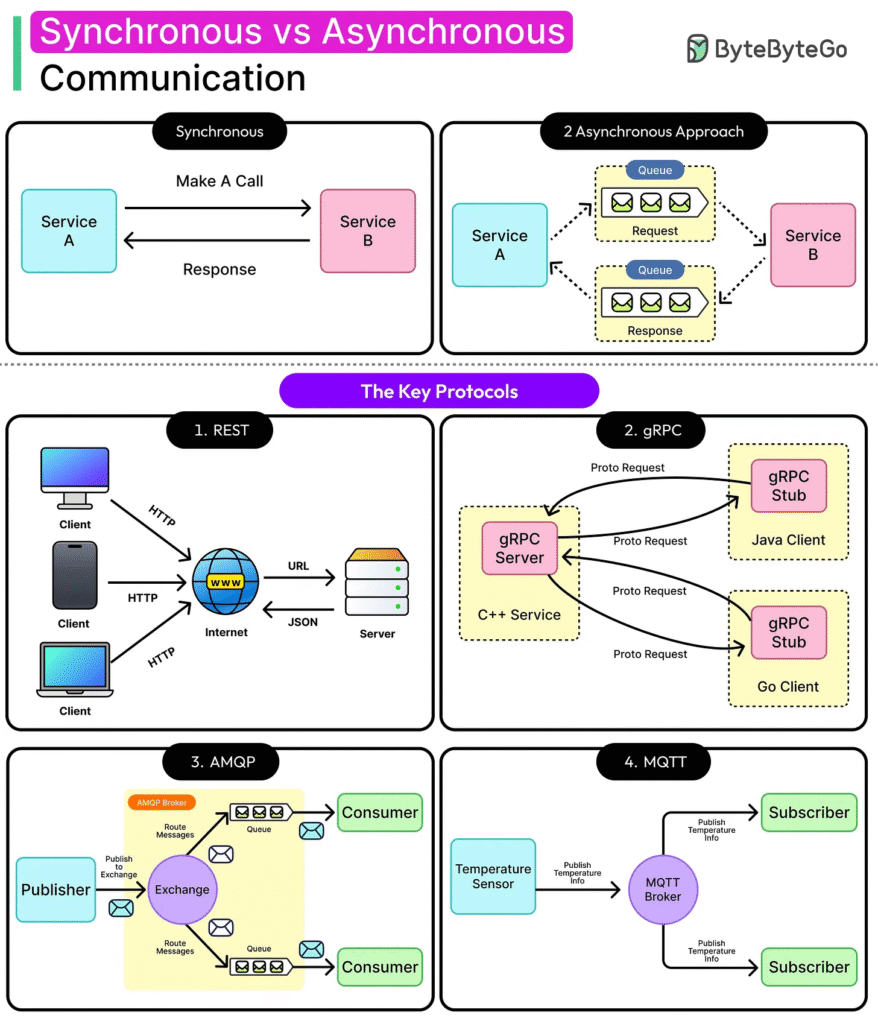Synchronous vs Asynchronous Communication: Choosing the Right Strategy for Scalable Systems

In today’s interconnected digital world, a system’s ability to communicate with others determines how reliable, scalable, and user-friendly it is. Whether you’re designing APIs, building microservices, or setting up real-time data pipelines, one question always arises: Should the communication be synchronous or asynchronous? lets see what the key highlights are for Synchronous vs Asynchronous communication architecture.
This decision, though often overlooked, can significantly affect everything from system performance and fault tolerance to debugging and user experience.
What Is Synchronous Communication?
Synchronous communication is like a phone call—you dial, wait for the other side to pick up, speak, and then hang up. In tech terms, one service calls another and waits for the response before continuing its task.
Pros:
- Easy to implement and trace
- Predictable flow
- Real-time responses
Cons:
- Slows down if the receiving system lags
- Prone to cascading failures
- Tight coupling between services
What Is Asynchronous Communication?
Asynchronous communication is more like sending an email. You hit send and move on—no need to wait. The receiver can respond later at their own pace.
Pros:
- Loose coupling between services
- Higher fault tolerance
- Better scalability and throughput
Cons:
- Complex error handling and debugging
- Delayed responses
- Harder to maintain state
When to Use Which?
Choosing between the two depends on your system’s requirements:
| Scenario | Preferred Communication |
|---|---|
| Real-time user interaction | Synchronous |
| Logging or analytics | Asynchronous |
| Payment processing | Synchronous (with fail-safes) |
| Notification systems (email/SMS) | Asynchronous |
| Data synchronization between systems | Depends on tolerance to delay |
Trade-offs to Consider
- Latency vs Throughput: Synchronous is great for low-latency needs, but asynchronous shines when throughput matters more.
- Simplicity vs Resilience: Synchronous systems are simpler, but asynchronous ones handle failures more gracefully.
- Immediate vs Eventual Results: Real-time actions need synchronous calls. Background tasks can be async.

Popular Communication Protocols
- Synchronous:
- HTTP/HTTPS
- gRPC
- WebSockets (partially async but often used synchronously)
- Asynchronous:
- Message Queues (RabbitMQ, Kafka)
- Event Buses (Apache Pulsar, NATS)
- Pub/Sub Systems (Google Pub/Sub, AWS SNS/SQS)
Blending the Two: The Hybrid Model
Many modern architectures use a hybrid approach—sync for critical flows and async for background tasks. For example, an e-commerce app might process payments synchronously but send confirmation emails asynchronously.
Final Thoughts on Synchronous vs Asynchronous communication
There’s no one-size-fits-all solution. Understanding the trade-offs and knowing your system’s goals is key to making the right choice. Design for flexibility, expect failures, and always keep your user experience in mind. These are the key notes for the Synchronous vs Asynchronous communication in your design architecture.
Whether you’re scaling a startup app or re-architecting an enterprise platform, mastering communication strategies is the backbone of building resilient, performant systems.
Read more🌐 about latest Tech updates on out Technology and Learning labs Category Section



